#ancestral worship
Explore tagged Tumblr posts
Text

Yuletide is over, which means it's the perfect time to share my Yule altar
#aka “how to make yule trve kvlt”#witch#altar#pagan#satanist#eclectic witch#baltic witch#photography#witch altar#my altar#witch aesthetic#satanic aesthetic#ancestral worship#yule#yuletide#yule altar#yule aesthetic#winter solstice#i guess there's a lot of horned creatures this time XD#because as you probably caught on by now the Lightbringer is there always and Ancestral and Personal tokens stayed too
63 notes
·
View notes
Text
Ancestral Veneration and Why it’s Important
This is going to be a post about a topic that people seem to forget or deem unimportant even fearful about with either good reasons or just never thought about it. I just wanted to mention YOU DO NOT HAVE TO WORK WITH ANCESTORS IN YOUR PRACTICE this blog is mostly for those who are interested in it and not sure what ancestral veneration is.
I’m a pagan and a witch that practices Ancestral veneration in my practice, not around it but it’s definitely a big part of why I practice certain paths. I’ll go in beginner tips, what to expect and the myths, the offerings and the recommendations. But let me go a bit into the importance of Ancestral Veneration and worship in human history since it’s still prevalent today.
Historical importance of Ancestral Worship
Ancestral worship and veneration has been at least one of the oldest religions that humans have ever believed in. Archaeological evidence shows the early humans taking care of their dead and burying them for respect and dignity maybe even courtesy to the deceased. It became sacred to them, imagine back then without fully understanding about the world someone that you spoke and saw now gone, it’s a profound moment one’s life that they must believe that their spirit lives on and they themselves wanted a peaceful resting place. It’s a cycle, many cultures and religions believe that life is a cycle, death is never the “end” rather an end of a journey to a new part of one’s life.
To this day people honor their deceased loved ones, visiting their graves, offering them gifts at their resting places, speaking to them, having their picture on a table surrounded by their favorite flowers, etc. Honoring the dead and respecting the dead is a very revered part of human life and something that we all would like to expect when we’re gone from our living family. Spirits also related or not, the dead as well should be treated with outmost respect and dignity like our ancestors did.
Some cultures like the Romans believed that if the spirits especially ancestral spirits (Lares) weren’t appeased they become angry if worshipped improperly or their will have not be been fulfilled. In Ancient Greek tradition they would place a coin in the mouth for the deceased to make sure their spirits would go into the afterlife safely and less traumatic. Each culture and society had a different way of how the ancestors would live in the afterlife.
Even in the Christian Bible shows the significance of ancestors, there is a reason why genealogies are included in the Bible. How Jewish people revere Abraham as their founding father since he is the first Hebrew patriarch which is very important to them and their religion. How even Jesus is related to David on both sides. Even immediate family is important like Jesus’s mother Holy Mary. In Norse Paganism it’s said that the kings were descend from gods like the Swedish Royal family related to Freyr. In Shintoism it is said that the First Emperor of Japan is related to the Sun Goddess Amaterasu. Japan and other many East Asian countries have a strong relationship and traditions regrading Ancestors.
Why Ancestral Veneration?
Ancestral Veneration is generally taken outside of paganism and witchcraft a very sacred thing for families, they can heal, they can come together, grieve together, reminisce together especially if they knew that person in life. But also asking the deceased loved ones for guidance and protection, to help their family in life whom they love the most. Plus this can help especially if you are into past life regression, we reincarnated with our ancestors many times and they have been able to see us in their time and now. It can be really insightful to understand of who we were in those lives.
Whatever legacy they left behind that you admired from them is continued for generations to come as well as heirlooms, a mother passing down her sentimental items to daughters or their children alike it’s a remembrance of what they were known by as well.
“Cows die, family die, you will die the same way . I know only one thing that never dies: the reputation of the one who’s died.” Havamal, Stanza 77.
If you’re going into paganism or witchcraft or both that are related to your ancestry. Your ancestors are the best teachers and mentors especially if they also have been in these specific practices and traditions. If you want to learn Seidr for instance a magical practice rooted within Scandinavian traditions and you have said Scandinavian roots you can contact a ancestor that practiced it in life and willing to help and teach you. What’s unfortunate about ancestral veneration looking down upon for many centuries making people turn away and against the practice is that it’s said that spirits can become lost if they aren’t being honored or remembered that makes them fade and lost.
Five Myths about Ancestral Veneration and what to expect. This is not going to be sugarcoated, I’m being honest and this what I’ve experienced in my own practice and how many others have experienced as well. I would add on if I forgot anything but these are most common misconceptions I have heard. The red are the myths if you are wondering.
Myth #1: All ancestors on the other side have my best interest and support all what I’m doing This is a common misbelief, now there is ancestors that will support you no matter what and your actions. But if you’re a pagan and a witch there is going to be Christian ancestors who won’t support you at all. Their human spirits with still human functions and beliefs. Not to say you can’t communicate but set your intentions and boundaries before meeting them, some will tolerate and some will make their opinions and beliefs known possibly even try to convince you. I know it sounds like fear mongering but it’s to what you would expect. This doesn’t mean you cannot make contact or venerate them because of it. It’s a choice that is a two way street, even spirits in the other side have freewill just like we do.
Myth #2: All Ancestors are well in spirit No, not exactly, when humans on earth do horrible things or experience horrible things it will take affect in the spirit world no matter what. Keep in mind time works very differently in the other world that it will take centuries for those who are healing to fully recover and those to actually realize their problems, messed up life on earth if they choose to recognize it. Again as I said just humans in the physical world human spirits also have free will and choices.
Myth #3: Only Human spirits are ancestors Nope commonly yes when we think of Ancestors we think of human beings that lived either with us or before us. But this isn’t the case, pets for instance that became our beloved family members and part of our inner circle are our ancestors. My cat that recently passed I had him since I was nine years old, I always thought and treated him like family because of that he merged into my family circle. Also animals can symbols of family, like a bear, an owl, an elephant, etc. that they can be represented as your ancestors as a whole.
Myth #4 : Ancestors are limited to just blood family Also a misconception, close friends and even adopted family members are considered to be close family. Some people won’t have blood relatives in life and find their found family which is just as valid and meaningful like a blood family is. This also goes to if you’re a person that likes to write you might venerate your favorite author, if you like to draw or paint you can venerate an artist that you admired a lot. Your family might have patron saints, deities, or local heroes and spirits that have been part of your family for generations. That’s why it’s nice to know where your family originated from what country, village, city, etc.
Myth #5: No Ancestors of mine did anything wrong Everyone’s ancestors did something horribly wrong in their lifetime, some were messed up people. But there are good ones that aren’t like that anymore, if you want to venerate them that’s up to you and your practice. I personally don’t do it because especially if they did something wrong and have no remorse for it I ain’t venerating none of them.
There is no reason to be afraid.
I know I seemed to be fear mongering in the previous part that’s because I don’t want to sugarcoated of which is most likely to be expected.
The Bottom line when contacting (if you want to have contact with them) and venerating your ancestors is that their no different from a human person in this physical realm. They will have personalities, likes, dislikes, opinions, beliefs like any other human being BUT from my experience a lot of my ancestors are very wise, humorous, kind, and non-judgmental. My advice if you really want to contact someone who is going to be supportive and helpful in your paganism and witchcraft, ask specifically for that person I usually ask for ancient ancestors pre Christian wise but there many folk witches and pagan ancestors that are more modern and recent that can most definitely help you! Speak to them like any other human interaction would be as if you’re talking to a living friend, family member or complete stranger you’re meeting for the first time.
How to Communicate with your ancestors
I have mention “contacting” your ancestors you can speak with them it’s not impossible.
1. Meditation and dream work: Most common and effective way to really get them to communicate you and send signs is through dreams. Meditation for a clear and close connection with them.
2. Tarot: Very common and just as effective, my most recommended first step when communicating with your ancestors. Using a tarot deck can help with putting your foot through the door. There is a great book which will recommend at the of the blog that does ancestral and tarot together.
3. Pendulum and a spirit board: This is more in depth but it has been very effective for me and many others to really connect and communicate with my ancestors. It’s good to state your intentions and boundaries before doing any of said above, but this is where you really need to set it. Before starting grab the pendulum over the board don’t let it swing and say, “I ask of the good and supporting ancestors that have me in good intent and support of my path and practice, I would like to meet you”. Of course you get specific like “I would like to meet an ancient Roman ancestor” that’s just an example of how it would go safely and respectfully.
4. Just talking to them. Yep sounds easy enough, you would just get something that represents ancestors or even a specific ancestor. For instance your grandmother’s rosary and just talk to them or pray to them. It’s a very simple and comforting way to bond with your family.
Offerings
This is going to be a “it depends on the ancestors” but there has been a universal notion of what ancestors do really like. From items, food, drink, etc.
Rosaries for catholic ancestors or the cross for Christian ancestors generally speaking
Pagan symbols for your pagan ancestors
Statues of ancestral gods or saints or other important entities
Sweets: Cookies and cakes are very popular
Alcohol: my Germanic ancestors love it when I offer beer, mead, ale. But also wine and other alcoholic beverages for others.
Regular libations like water, coffee, tea. juice, etc. good substitute if you cannot use alcohol.
Their meals from their home country, my Italian ancestors, recent and ancient love it when I make them pasta.
Incense some cultures call it the food for spirits
Heirlooms
Family photographs
Candles
Coins
Book of the dead, if you meet an ancestor you can record them down into a book that is solely for your family and to be passed down on and on. It’s a memorial service to them that someone knows their name and who they were.
Specific traditions that your ancestors came from for instance libations of wine for your Greek ancestors.
Good ancestral veneration books that personally helped me a lot and I know a lot of others to get started.
Ancestral Tarot by Nancy Hendrickson she helps how to contact and connect with your ancestors and ancestry using tarot
Ancestral Grimoire by Nancy Hendrickson like Ancestral Tarot she goes how to connect with your ancestors but this time how to really work with them. One of the exercises is to work with an ancestor for a month and a different for the next one.
Honoring your Ancestors by Mallorie Vaudoise she gives good information on different ways to connect with your ancestors, the different types of ancestors, she does have a Southern European and Catholic folk magic take to it which is fine but it’s not the sole focus of it but she does put good information in the book to help someone get started. 
Badass Ancestors by Patti Wigington also good beginners guide to ancestral veneration and how to connect through meditations and develop relationships with them even how to deal with problematic ancestors. She goes into how to research your genealogy and useful tips!
#paganism#hellenic polytheism#witchcraft#hellenic community#norse paganism#celtic paganism#kemetism#ancestral worship#ancestry#ancestral veneration#paganblr
132 notes
·
View notes
Text



#Shangó Ceremony#black history#black people#blacktumblr#black#black tumblr#pan africanism#black conscious#africa#black power#black empowering#grenada#Afro-Caribbean Spirituality#Orisha Tradition#Dondo Drum#Drumming Ceremony#Ancestral Worship#caribbean culture#vintage photography#african diaspora#Shekere#ritual#dance
50 notes
·
View notes
Text
Yoooo soooo i have created a community that is geared towards adult knowledgable witches, crafters, practitioners, revivalists, ancestral practices, ect. It is geared to have space for adult content, and space for more knowledgeable inquiries. Or just general displays of your practice. A place to show off what you know and ask about what others know. I'm not sure if it'll go anywhere. But honestly when I join craft communities, a lot of the feed is just super basic questions research could answer for you. And I don't feel like I had a place in those communities, bc I was way way past all of that. I'm hoping this can be a space for ppl who don't need that information on their feed. No hate to anyone who does. Also I never GET to talk about Advanced magic, or see other ppl talk about theirs. I hope that can happen here. Even though there's no one in here I just made it today 12/17/24 🫠
#witchblr#witchcraft#warlock#eclectic witch#eclectic pagan#folk religion#folk magic#norse paganism#norse pagic#druid#druidism#satanism#occult#magick#spellwork#ancestral worship#pagan#paganism#wiccan#wiccanism#earth religions
46 notes
·
View notes
Text
The Philosophy of Shinto
Shinto, often referred to as "the way of the gods," is the indigenous spirituality of Japan. Unlike many Western religions, Shinto does not have a single founder, sacred texts, or a formalized set of doctrines. Instead, it is characterized by a reverence for nature, the worship of kami (spirits or deities), and practices that emphasize purification and rituals. Here’s an exploration of the key principles and ideas within the philosophy of Shinto:
1. Reverence for Nature
Nature as Sacred: In Shinto, nature is considered sacred and imbued with spiritual significance. Mountains, rivers, trees, rocks, and other natural features are often seen as manifestations of kami.
Harmony with Nature: Living in harmony with nature is a central tenet. This involves respecting and protecting the natural environment, recognizing it as the dwelling place of the kami.
2. Kami (Spirits or Deities)
Multiplicity of Kami: Shinto recognizes a vast number of kami, which can be spirits of natural objects, ancestors, or deified historical figures. Kami are not all-powerful gods but rather spirits with specific roles and localities.
Interconnection with Kami: The relationship between humans and kami is one of mutual respect and care. People perform rituals and offer prayers to kami to seek their blessings, protection, and guidance.
3. Ritual Purification
Purification Practices: Purification, or misogi, is a fundamental aspect of Shinto. It involves cleansing oneself of impurities and pollutants to maintain spiritual and physical purity. This can be done through washing, rituals, or even symbolic acts.
Rituals and Festivals: Shinto rituals and festivals (matsuri) are numerous and diverse, often held at shrines dedicated to various kami. These ceremonies reinforce the connection between the community and the kami, celebrating seasonal changes, agricultural cycles, and significant life events.
4. Shrines and Sacred Spaces
Shinto Shrines: Shrines, or jinja, are the focal points of Shinto worship. They are considered the homes of the kami and are places where people can go to offer prayers, perform rituals, and seek blessings.
Torii Gates: The iconic torii gates mark the entrance to sacred spaces, symbolizing the transition from the mundane to the sacred. Passing through a torii gate signifies entering a space where the kami dwell.
5. Ancestral Worship
Respect for Ancestors: Ancestral worship is an important component of Shinto. Families honor their ancestors through rituals and offerings, believing that deceased family members continue to influence and protect the living.
Continuity and Connection: This practice underscores the continuity of life and the interconnectedness of generations. Ancestors are seen as integral to the family's ongoing spiritual wellbeing.
6. Syncretism with Other Beliefs
Integration with Buddhism: Shinto has historically coexisted and intertwined with Buddhism in Japan. Many Japanese people practice both religions, incorporating elements of each into their daily lives and rituals.
Adaptability: Shinto’s flexibility and lack of rigid doctrines allow it to integrate other spiritual and philosophical traditions, adapting to the evolving cultural landscape.
The philosophy of Shinto offers a unique perspective on spirituality that is deeply intertwined with nature, community, and the reverence for life’s sacred aspects. It emphasizes living in harmony with the natural world, maintaining purity through rituals, honoring the kami and ancestors, and celebrating the cyclical nature of life. Shinto’s adaptability and integration with other traditions highlight its enduring relevance in contemporary Japanese culture.
#philosophy#epistemology#knowledge#learning#education#chatgpt#Shinto#Philosophy Of Shinto#Kami#Nature Worship#Ritual Purification#Shinto Shrines#Ancestral Worship#Japanese Spirituality#Torii Gates#Misogi#Matsuri#Spiritual Traditions#Indigenous Beliefs#Syncretism#Cultural Heritage
10 notes
·
View notes
Video
youtube
Uncovering the Power of Hoodoo: An Ancestral Journey, May 16, 2023
Tank Ball explores the origins of Hoodoo, a unique and powerful form of spiritual practice deeply rooted in African American culture and the ancient ritual of ancestral worship.
Religions like Vodou in Haiti, Candomblé in Brazil, and Santería in Cuba share similarities with Hoodoo, but are unique to the places where they were created. Through interviews with renowned scholars and spiritual practitioners, Tank Ball traces the lineage of Hoodoo back to the era of slavery, where African spiritual beliefs intertwined with Christianity and provides an intimate glimpse into the practices and philosophies that bind generations together.
PBS Voices
#continuity#culture#resistance#black history#colonialism#slavery#spirituality#religion#santeria#hoodoo#diaspora#ancestral worship#syncretism#trauma#Candomble#Ritual#PBS#community#history
136 notes
·
View notes
Text

la ofrenda por mi familia

la ofrenda de san miguel
♡ ♡ ♡ ♡ ♡ ♡ ♡ ♡ ♡ ♡ ♡ ♡ ♡ ♡ ♡ ♡ ♡
thank you for my blessings and life ♡
gracias por mis bendiciones y vida ♡
♡ ♡ ♡ ♡ ♡ ♡ ♡ ♡ ♡ ♡ ♡ ♡ ♡ ♡ ♡ ♡ ♡
#me#san miguel#ily antepasados#ily san miguel#ancestral worship#ofrenda#san miguel ofrenda#mexican folk catholicism#mexican folk magic#folk magic#folk witch#mexicana#witchblr#bruja#brujas of tumblr#brujeria
13 notes
·
View notes
Text
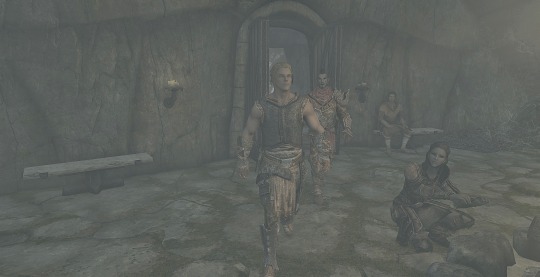
it was awkward for him after he noticed teldryn and jenassa. "...filthy dark elf necromancy.. oh– but i'm sure you're not like that, of course, heheh..."
#marc just chillin there#x#golldir#teldryn#jenassa#teldryn sero#nords#nord#dunmer#marcurio#skyrim#skyrim screencaps#skyrim screenshots#tesv#ancestral worship#hillgrund's tomb
9 notes
·
View notes
Text
Sometimes, I think about my ancestors.
My mom says I look like my grandmother. I wonder if that means I look like someone else much further down my lineage too.
I wonder if my Jewish great-grandfather was smiling at me while I sat in detention for punching an antisemite. I wonder if it was him who helped push me to do that. I wonder if he is the reason I always felt called to Judaism when I was younger.
Maybe my Quechua ancestors walk with me while I take walks through the woods to reconnect with nature. Maybe they call me to the oceans and the forests, maybe they call me to work with the spirits and deities of my home.
Do my Polish ancestors sigh with disappointment when I burn my pierogis? Did they laugh that time in middle school when that teacher tried to speak Polish to me and I just stood and stared at her?
Did my Italian Catholic ancestors beam with pride when they watched me as a child on the altar as an altar server, or were they confused and disappointed because I was a girl? Are they disappointed in me? Do they look at all my beautiful rosaries and feel they’ve gone to waste?
I have ancestors who lived in this state before it was a state, when it was still a part of the 13 colonies, ancestors who fought to make those colonies a country. What would they think if they could see our country now? What would they think of me? Do I look like any of them? Would any of them like me?
I wonder who stood upon this land long before I was even conceived, and I wonder who will stand upon it long after I have left this world.
#pagan#pagan witch#paganblr#paganism#ancestors#ancestor work#ancestor worship#ancestral healing#ancestral work#ancestral veneration#ancestral worship
9 notes
·
View notes
Text
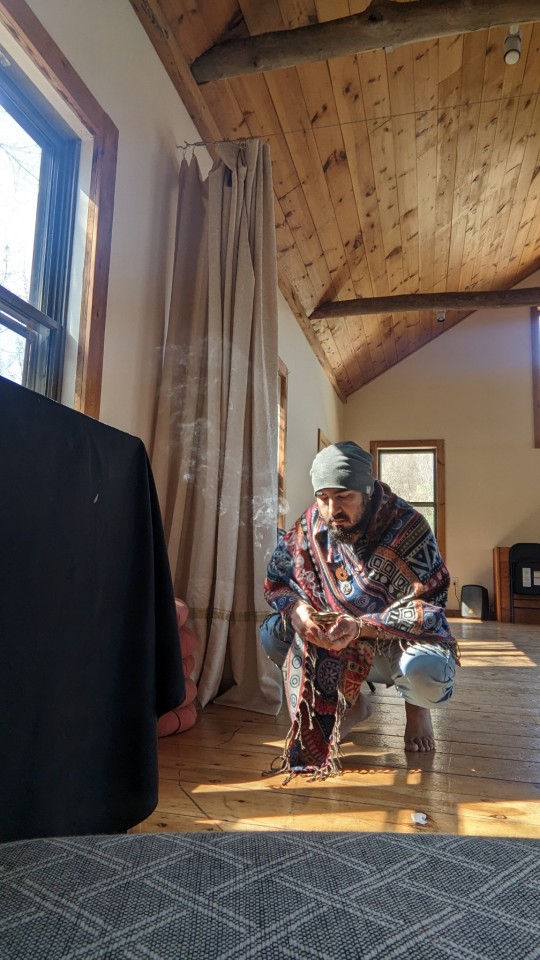
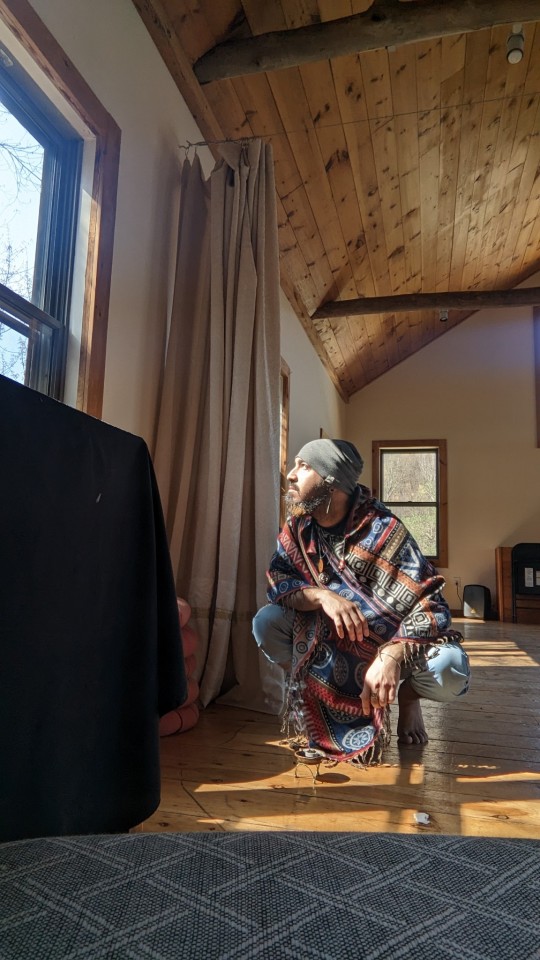
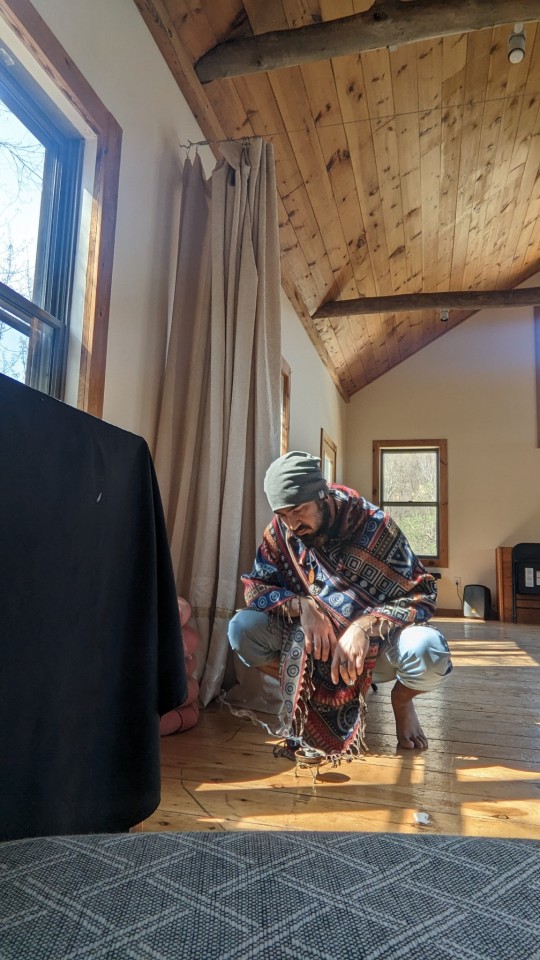
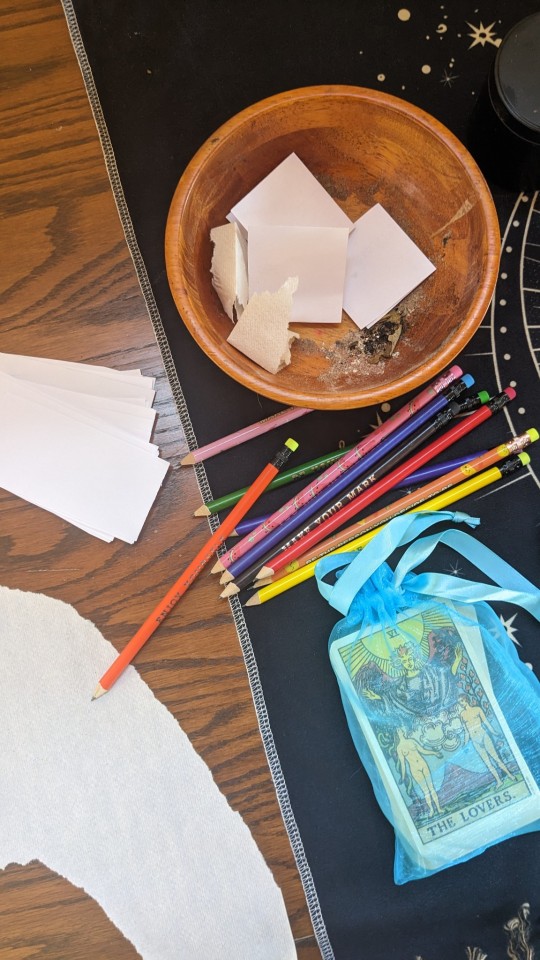

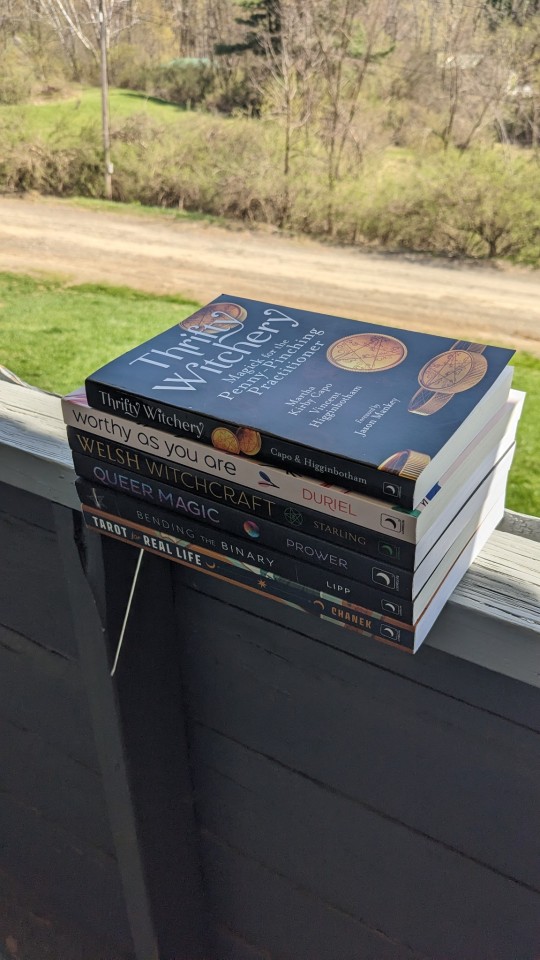
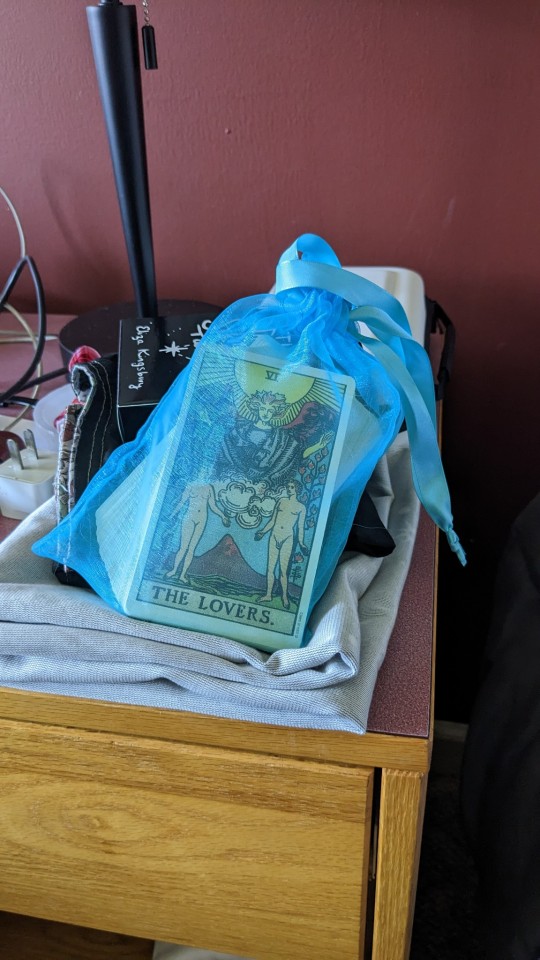
Inhale pain, exhale healing. Do not forget that you are made of dreams, dances, and beautiful songs of your ancestors singing time ago under the stars, through your blood runs the magic of thousands of stories of warriors, sorcerers, healers, farmers, heroes, artists, troubadours, and alchemists.
When you heal; you reclaim your power back.
When you stand up firmly in your power, you heal your ancestors and give them the chance to reclaim their power too.
Hugs warm like warm alpacas.
Xxo, ELO.
#wicca#witchcraft#magick#magic#witches#pagan#wiccan#easton Mountain#Easton Mountain Retreat Center#gay witchcraft#gay witches#gay witch#LGBT#LGBTQIA#LGBTQ#ancestry#ancestral veneration#ancestral worship
11 notes
·
View notes
Text
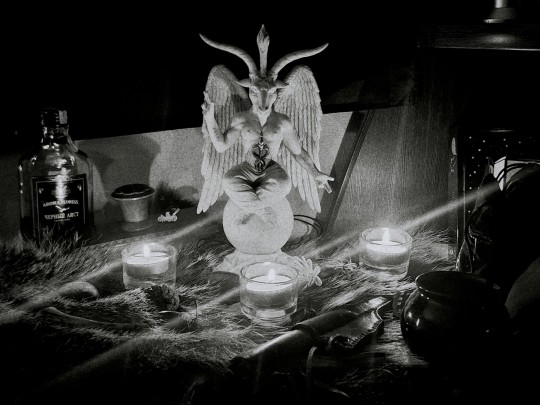
Since I'm sharing belated pictures, here's one from my Vėlinės/Samhain altar 🖤
#a lot of things going on here satan tokens from ancestors tokens from me autumn flowers divination tools crystals and so on#witch#altar#velines#samhain#pagan#satanist#eclectic witch#baltic witch#photography#witch altar#my altar#samhain altar#witch aesthetic#samhain aesthetic#satanic aesthetic#ancestral worship#it's the first time i look at my altar and admire it 🥲#i'm a polytheist in the sense i'm a pagan and a satanist and i practice ancestral worship#this holiday is mostly about ancestral worship but satan is always there#he and lilith are the deities i feel the most drawn to#i actually anointed my grimoire after taking it on the graveyard oddyssey and asking for my ancestors' blesssings#of course the offering part of the altar is alcohol 🤣#also i better not see anyone go “YoU cAnT bE bOtH” since i get that at times I am spiritually what my heart calls towards#some gods came to me with my roots some called to me#diary pages
28 notes
·
View notes
Text
Coins are Essential to Hellenic Worship and Witchcraft

In Ancient Greece Drachmae (the coins/currency of the time) were used not just in everyday life but honoring the dead. It was believe that coins were offered to the deceased right before they were buried. The coins were given to grant the spirits passage to the underworld by paying Charon who will ride across Acheron, a river in the underworld to the afterlife, fearing they will get stuck on the shores if they don’t have the payment to cross. Though it is a very old superstition it is still very important to offer such a gift to the spirits that crossed over, though whether you don’t believe such a belief or do about paying the ferryman the act of the gesture is a sign of great respect and admiration for the departed. Collect your spare change and don’t be afraid to use them for various reasons:
- Offer them to your ancestors.
- Place a coin on gravestones when you visit a cemetery.
- Offer coins to your deities as money being one of the great sacrifices to give to them even if it’s just a penny.
You can also do spell work with coins as charms, divination (flipping heads or tails), talismans, focal point of power, etc.
#hellenic polytheism#paganism#norse paganism#witchcraft#coins#money#ancient greece#hellenic pagan#hellenic worship#greek mythology#ancestral worship#ancestors#spirit work#death witch#death witchcraft#spirit communication
185 notes
·
View notes
Text
Denar prednikov
Zavedamo se, kako pomembno je počastiti naše prednike in ohraniti spomin nanje. Eden od načinov za to je tradicionalna praksa denarja za prednike. V tem članku bomo raziskali zgodovino in pomen denarja prednikov, kako se uporablja danes, ter podali napotke, kje najti in kupiti te pomembne darove.
Kaj je denar prednikov?
Denar prednikov, znan tudi kot papir Joss, denar duhov ali duhovni denar, je tradicionalna kitajska praksa, ki sega v čas dinastije Han. Verjame se, da je posmrtno življenje nadaljevanje živega sveta, zato predniki v posmrtnem življenju potrebujejo zaloge, tako kot so jih potrebovali v svojem zemeljskem življenju. Denar za prednike se uporablja kot simbolična daritev, s katero se poskrbi za duhovne potrebe umrlih.
Papir se običajno sežge kot daritev med posebnimi dogodki, kot je festival Qingming, znan tudi kot dan pometanja grobov, ki je vsako leto 4. ali 5. aprila. Festival je priložnost, da družine obiščejo grobove svojih prednikov in jim ponudijo darila, vključno z denarjem za prednike, hrano in drugimi predmeti.
Kako se denar prednikov uporablja danes?
Čeprav ima denar prednikov korenine v kitajski kulturi, ga uporabljajo tudi pripadniki drugih kultur, vključno s tistimi, ki imajo kitajske prednike. Danes se denar prednikov uporablja kot način za povezovanje s pokojnimi bližnjimi in njihovo počastitev. Darila se pogosto sežigajo ob pomembnih mejnikih, kot so poroke in pogrebi, ali v težkih trenutkih, ko je potrebno duhovno vodstvo ali pomoč.
Nekateri ljudje denar prednikov uporabljajo tudi kot način, da svoje prednike prosijo za pomoč v posmrtnem življenju. Darila se lahko sežgejo z napisanimi posebnimi prošnjami ali željami, na primer za dobro zdravje, blaginjo ali vodstvo v določeni situaciji.
Kje najti in kupiti denar prednikov
Denar prednikov je na voljo na spletu in v specializiranih trgovinah. Pri nakupu denarja za prednike se je treba prepričati, da je papir izdelan iz visokokakovostnih materialov in da je kulturno ustrezen. V podjetju [ime vašega podjetja] ponujamo širok izbor denarja za prednike in druge tradicionalne ponudbe, ki so vsi izdelani skrbno in s spoštovanjem kulturnega pomena teh praks.
Zaključek
Zavedamo se, kako pomembno je spoštovati naše prednike in ohranjati spomin nanje. Denar za prednike je tradicionalna praksa, ki se je prenašala iz generacije v generacijo in ostaja pomemben način povezovanja z našimi bližnjimi in njihovega čaščenja v posmrtnem življenju. Ne glede na to, ali želite kupiti denar za prednike za poseben dogodek ali kot način, kako počastiti svoje prednike v vsakdanjem življenju, smo vam na voljo za svetovanje in podporo na vsakem koraku.
2 notes
·
View notes
Text
Me-Dam-Me-Phi Philosophy
Ancestral Wi-Fi and other connections… Dr. Basil Thistledown and the Spirits of the Past Dr. Basil Thistledown arrived in town looking, as always, like he had been caught in a mild explosion in a second-hand bookshop. His tweed jacket bore evidence of past encounters with herbal teas and uncooperative ink pens, his bow tie was slightly askew, and his satchel bulged suspiciously, as though he…
0 notes
Text
Veneration to the Children of the Dragon
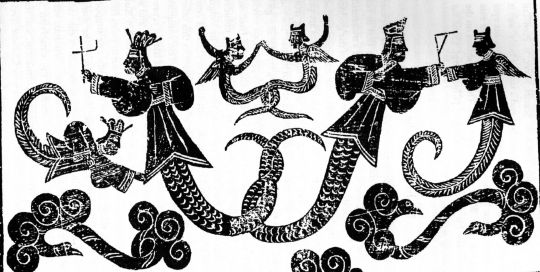
Fuxi and Nüwa couple from Wu 武 family funerary shrine (Wu Liang Ci 武梁祠), in present-day Jiaxiang 嘉祥, Eastern Han (151 AD). The archetypal symbolism of winged serpents, characteristic of Asian mythology, is still present in the oldest examples like this one.
The combination of bird and snake features refers to the Earth and Heavens realms’ cohesion. This is also the conjunction of Fire and Water, since birds are of a fiery nature, and serpentine beings – of water one. In later depictions, the primary symbolism was modified.
#chinese mythology#fuxi#nüwa#dragon#ancient china#eastern han#chinese culture#winged serpent#ancestral worship#chinese art#伏羲#女媧
40 notes
·
View notes
Text
So, reblogging from this point because I don't want to detract from the other arguments, but it makes perfect sense to me because of the belief that psychics, witches/magicians, those who actively interact with spirit in any way shape or form, intentionally or not, tend to also DRAW SPIRITS TO THEM. So it's like the difference between feeling like you need to lock your beater car that has nothing inside it for anyone to take, vs a mercedes benz. I'm not talking about value here, I'm just saying one of these cars is more likely to attract attention, but both cars still MIGHT get broken into though, which is why we do have some of these more outlandish modern stories like the conjuring house
So if you don't practice/don't believe then you are less likely to actually deal with anything supernatural to begin with
And then to add to that, there are a lot of new houses as well that haven't had death in them yet, and haven't had people actively practicing. So there's not a lot of reason something WOULD happen. It CAN happen though, so I honestly do believe that people should have some form of protection up regardless of if they practice regularly or not
One more reason as someone who venerates my ancestors, some people's ancestors are just very protective already, so they don't NEED to worry because their ancestors are pretty vigilant. Some people are just born with strong natural protection 🤷♀️
So this all does make a lot of sense to me because at the end of the day, it's a probablility game, and it goes up or down depending on several factors 😁 Idk how many people will agree with me on this, but that's my opninion, and I'd love to discuss further!
I wonder sometimes how witches who insist that unwarded home are just open season for spirits must view non-witchy homes. Like do they think that these places are just riddled with ghosts and spirits and bad energy because no one is regularly cleansing or casting protective spells?
I wonder if it's something that crosses their minds or if they reflect on the broader implications of the idea that an unwarded home is automatically going to attract spirits and whatnot. Or maybe they don't think about the concept outside of witchcraft-related applications, I don't know.
Moreover, I wonder where they're getting these ideas and whether it's all just influenced by ghost shows and the plethora of Warren Bullshit that floats about the community.
No shade or anything, it's just something I think about whenever these conversations come up.
566 notes
·
View notes